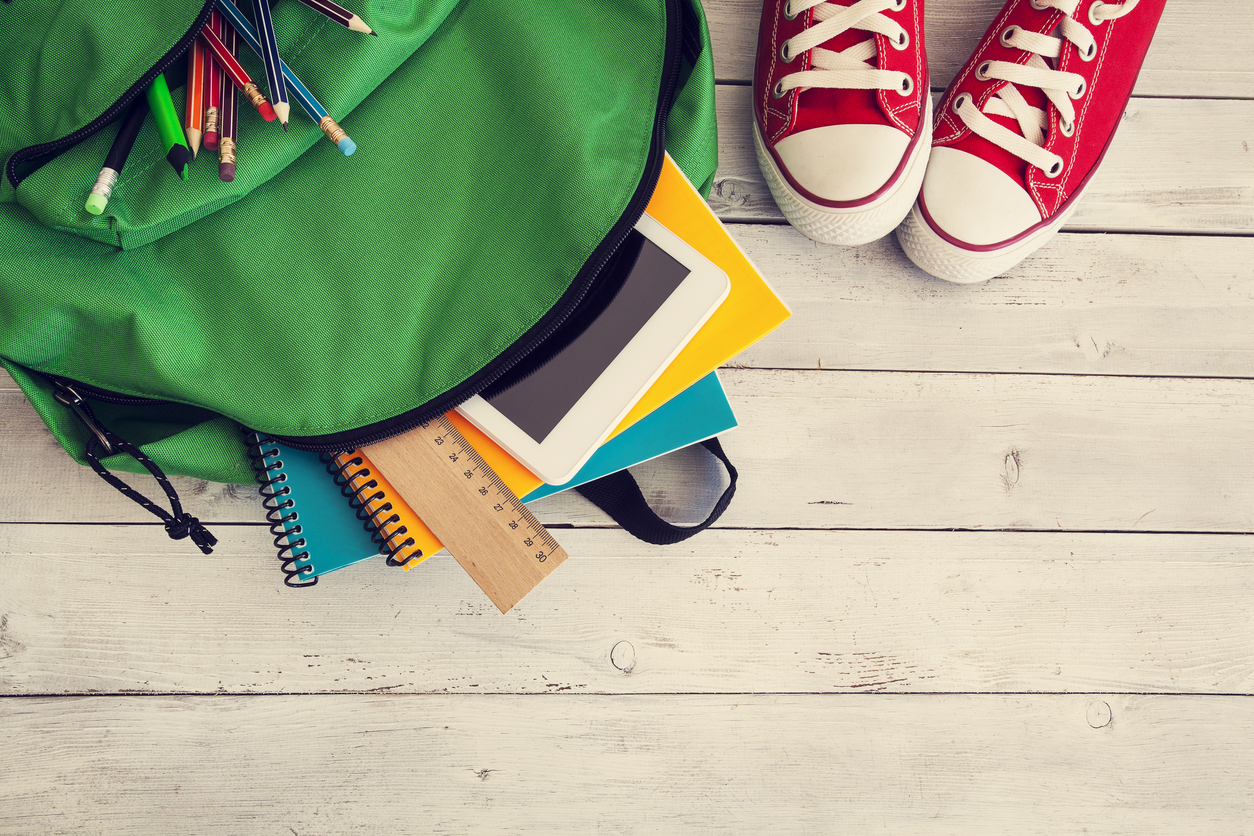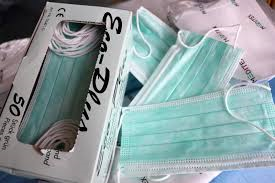
Back to School
It’s back-to-school time. The keys to success this school year vary widely depending on your student’s age. A preschooler requires different types of preparation than a teenager. Regardless, all students need support from the adults in their lives in order to have a successful start to the new school year.
Besides a red apple and a sharpened pencil, the backpack is a symbol of the back-to-school season…and for good reason. Textbooks, notebooks, and other school supplies are heavy. If possible keep your student’s backpack load below 20 percent of their body weight, especially for young children and adolescents. If your student’s load is likely to exceed this amount on a regular basis, you might consider a rolling backpack. As a rule, choose backpacks with two shoulder straps, the wider the better. It is best to center the load on the student’s back rather than to one side or below the waist. Remind the student to use both straps since using one strap can strain small muscles of the neck as they are forced to share the load. For these reasons, messenger-style bags are usually best avoided.
For younger children, a new school environment can be scary. It may help to do a rehearsal visit to the school and classroom prior to the start of the semester. If you have students that will be walking to school for the first time, review the route with them. Pay particular attention to the streets that must be crossed. There may be a group of more experienced students that your child can join.
If your student is a new school bus rider, consider the following: ● Practicing the route to the bus stop ● How to safely board and ride the bus ● How to behave on the bus ● If applicable, practice the procedure for crossing the street in front of the bus after exiting
Sleep is crucial for a student’s focus and memory. In fact, insufficient sleep decreases academic performance and increases absenteeism. Children under 13 need 10 to 12 hours of sleep per night. For the new school year, try to establish a routine that includes turning off electronic devices, dimming lights, and quieting the house an hour or two before bed. Create a consistent bedtime routine and a consistent wake-up time. Teens in particular, may struggle to get back onto a school schedule after the summer. While they don’t need as much sleep, the daily rhythms of teens are naturally shifting later to support their maturing brain and body. It’s not that the teen is lazy, rather their biology is changing. While some schools have shifted their start times in recognition of these biological needs, most have not. Perhaps when rousing a teen for school, the best approach is to be firm but also understanding.
Routines can also be important when it comes to successfully completing homework. Here are some tips for setting up a successful homework routine: ● Create a quiet study environment without distractions. ● Build homework time into choices about after-school activities. ● Establish rules early regarding TV and other distractions during homework time. ● Supervise computer and internet use. ● Offer support and show an interest in their work ● Use strategies to combat eye fatigue and brain fatigue such as short breaks, stretches, walks, yoga poses, or other exercises. ● Speak with the teacher early about topics your student is struggling with. ● If your child has persistent difficulty focusing on his/her homework, consider discussing your concerns with a healthcare provider.
Parents of a student with a chronic health condition or an allergy probably do not need to be reminded to discuss the condition with the teacher. It may also be helpful to inform any bus drivers, crossing guards, recess supervisors, or other adults who regularly interact with the student as well.
Set your student up with the right tools, good sleep, and confidence with these back-to-school tips. Most of all, make sure your students know they have your support this school year.
Sources:



